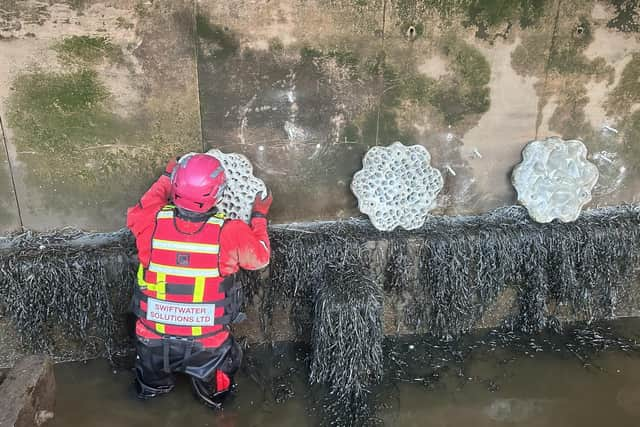Whitby harbour sees new artificial habitats installed, including a living sea wall and fish shelters
and live on Freeview channel 276
The aim is to trial a range of artificial marine habitats, created by Better Estuaries and Coastal Habitats (BEACH) Esk, to see which have the most success attracting marine life species and colonisation.
The School of Biological and Marine Sciences at Hull University will monitor the results.
Advertisement
Hide AdAdvertisement
Hide AdArtificial habitats will be installed at New Quay, Fish Quay, Endeavour Wharf and Scotch Head and include award-winning Living Seawalls Panels which were installed this month, and artificial rock pools and suspended fish shelters which will be installed in the coming weeks.


The Esk Estuary is important for migratory fish including Atlantic salmon and sea trout and other species such as sea lamprey and eel.
These fish species support the rare and endangered freshwater pearl mussel which lives in the River Esk.
New habitats will provide feeding grounds and refuges for fish and especially for juveniles seeking shelter.
Advertisement
Hide AdAdvertisement
Hide AdAllison Pierre, project lead for the Environment Agency, said: “The ecological health of our rivers must improve.
"Historic man-made structures in our estuaries and the ongoing pressures from human activity are adversely affecting water quality, habitat and wildlife.
“Creating artificial habitats will provide an opportunity for nature to thrive above and below the water and, combined with other interventions such as reducing pollution upstream and creating new saltmarsh and wetland, will help communities reconnect with their local rivers, bring shelter and food for fish and wildlife, and support improvements in water quality.”